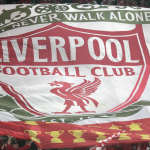IT was just over 10 years ago, on 19 January 2010 to be exact, that David Sullivan pulled up outside Upton Park in a blue Rolls Royce as the new co-owner of West Ham United, making a less-than-understated photo opportunity of his arrival as he buttoned up a claret jacket. This was, as Sullivan saw it, his home.
“It makes no commercial sense for anyone to buy this club,” Sullivan said of his and long-time business partner David Gold’s takeover of the Hammers. “We’ve bought this as fans, we’ve bought this as supporters, not from a business point of view.” It seemed, at the time, feasible that Sullivan actually meant what he said. He did, after all, grow up in a house on Green Street quite literally in the shadow of the Boleyn Ground.
Now, though, such words ring hollow. The Boleyn Ground was flattened two years ago. In its place stands a number of apartment blocks while West Ham now squat in a stadium that isn’t theirs and most important doesn’t feel like theirs. For supposed fans of the club, Gold and Sullivan have shown little regard for its community and identity.
West Ham: 24 points (18th)
Next fixtures
at Man City
at Liverpool
v. Southampton
at Arsenal
v. Wolves
at Tottenham
v. Chelsea pic.twitter.com/Fdlk20PAJ0— Matchday365 (@Matchday365) February 1, 2020
Indeed, the move to the London Stadium has been catastrophic, but as impossible as it may seem to an already disenfranchised and disgruntled fanbase things could get even worse. Facing a fight to merely stay in the Premier League this season, West Ham have all the makings of another Leeds United, or more relevantly another Birmingham City.
Gold and Sullivan actually left Birmingham City as a Premier League outfit, selling up in 2009, but their lack of investment and most crucially the deterioration of the infrastructure, both sporting and physical, at St Andrew’s hollowed out the club. The eight years spent in the second tier since relegation from the top flight in 2011 is on Gold and Sullivan as much as anyone else.
A similar hollowing out has happened at West Ham over the past few years. This is a club without a spiritual home having left Upton Park behind and without the coaching, scouting and commercial infrastructure to truly thrive at Premier League level. That there was even talk not so long ago of challenging for Champions League qualification without these things hints at the level of delusion within the club.
The re-hiring of David Moyes was also another sign of West Ham’s desperate lack of direction under the current regime. What exactly did Gold and Sullivan see in the Scot they didn’t see 18 months ago when they decided it wasn’t worth keeping him on after his first stint at the club? The Hammers needed an inspirational figure to lift everyone around the London Stadium. Instead, they got a figure whose calling card of late has been making bad situations even worse.
David Moyes. The lowest win percentage of any West Ham manager, ever. Irons ⚒
— Billy Munroe (@billymunroe) February 3, 2020
West Ham are without a win in their last six games in all competitions with Saturday’s collapse at home to Brighton, ultimately drawing 3-3 having led 3-1 with just 15 minutes left, a new nadir, dropping the Hammers to 18th place in the Premier League table. Should they go under, there’s little reason to believe they would recover any time soon.
The problems West Ham are currently suffering from are similar to the ones being experienced at Manchester United. It’s not that the Hammers haven’t spent money – over £230 million has been parted with for new players over the past three years. It’s that the money they have spent has been splurged with no overarching plan or vision in mind.
Under Gold and Sullivan, it was promised that West Ham would be elevated to the next level, that they would guide the club to a new summit. Instead, the Hammers are drifting further and further away from the top of the English game to the point where their heels are now teetering over the cliff edge.



